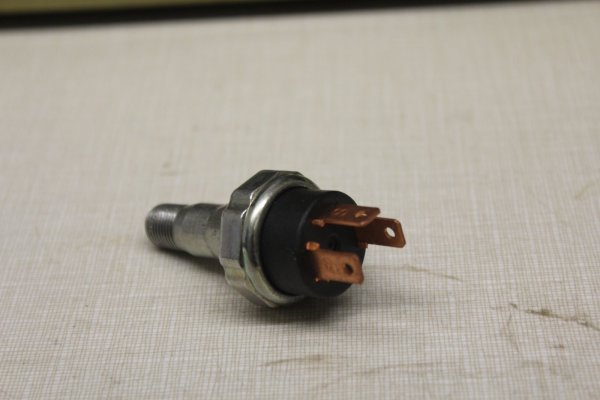I can't understand why you want a fuel pump controlled by an oil-pressure switch unless it is to kill the fuel-pump when the engine is not running.
I would definitely want a bypass toggle-switch to allow me to run the pump when the engine was not.
On any self-respecting diesel engine, if the fuel-pump runs when the engine isn't, it just cycles the pumped fuel through the return line and back to whichever tank is chosen.
Anyway, as for anything that taps into an oil-pressure orifice --- this is what I do:
Most oil-pressure access ports on an engine are 1/8"NPT.
Plain old grease-gun hoses are 1/8"NPT Male at both ends and very capable of handling anything engine oil-pressure is going to throw at them.
They are available anywhere from six-inches to longer than you are tall.
If you look, you can probably even find them in braided stainless.
I find where the original oil-pressure sending unit is screwed in and replace it with my grease-gun hose.
If I want to re-orient the direction the hose is pointing and to prevent kinks, plain old 1/8"NPT street-elbows can be employed.
If the engine port happens to be something larger than the grease-gun hose's 1/8NPT, a reducer bushing can be used.
With the engine end of my grease-gun hose firmly attached, I orient the hose to somewhere convenient to access and where I can add all my oil-pressure switches and their associated wiring.
This is accomplished by adding TEE fittings with the end of the last one plugged so more TEEs can be added ass necessary.
With my grease-gun hose arrangement, there is only one connection down there on the engine to worry about.
All my switches and gauge senders are well away from the engine's heat and vibration; plus, I don't have a host of wires against a hot engine.
As for my line of TEE fittings, they do make many-ported manifold fittings that can be used instead; I just found one in my swap meet bargains stuff that is bristling with hose barbs of every size imaginable and wondered to myself "what would I ever use that for";and, while typing this, it came to me that it would be ideal to use instead of a string of TEE fittings.
Now, for any oil-pressure line that connects to my grease-gun hose oil-pressure access manifold, such as the line to a mechanical gauge, I install a 1/8NPT Ball-Cut-Off Valve first in line and then screw the gauge line into that; thus, in an emergency event, such as oil spraying all inside the cab, I can close that valve and drive on.
I have a big continuous-duty solenoid that ties the Leece-Neville and Starting Batteries to the solenoid-isolated accessory battery once 2-psi oil-pressure is achieved; thus, the accessory battery gets charged when the engine is running and gets switched out of the circuit when the engine is not running with no further thought nor input from me.
The only things connected to the starting batteries are the starter and the twin solenoids that control it; all other circuits are connected to the accessory battery.
I can leave everything electrical ON and drain that accessory battery to the nub and still have two very-hot Group-31s batteries just itching to sling the rods out of the engine.
The switch that controls all this wonderfulness is a tiny ON-at-2-psi/OFF-below oil-pressure switch that gets it's oil-pressure from my grease-gun hose arrangement.

